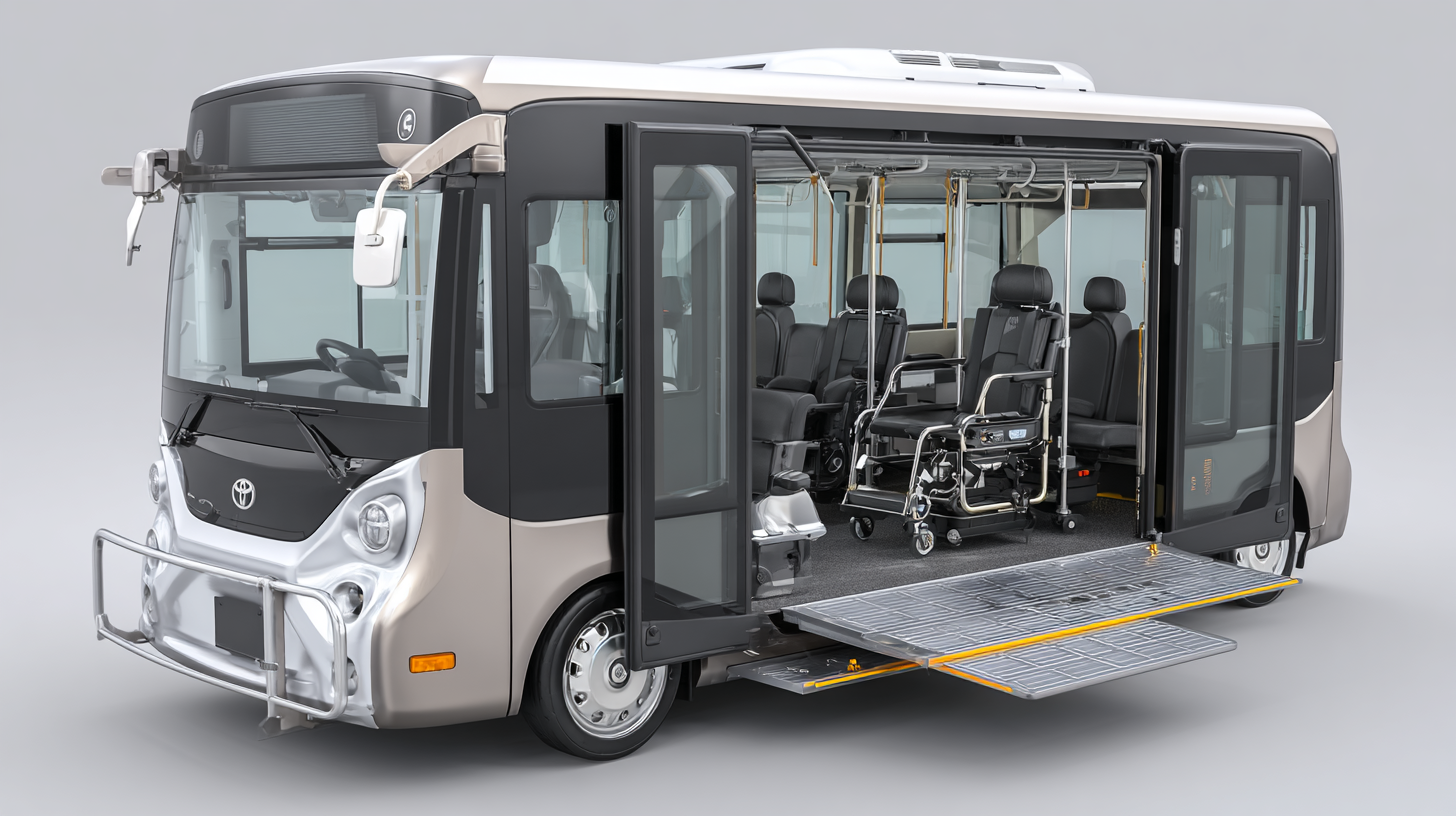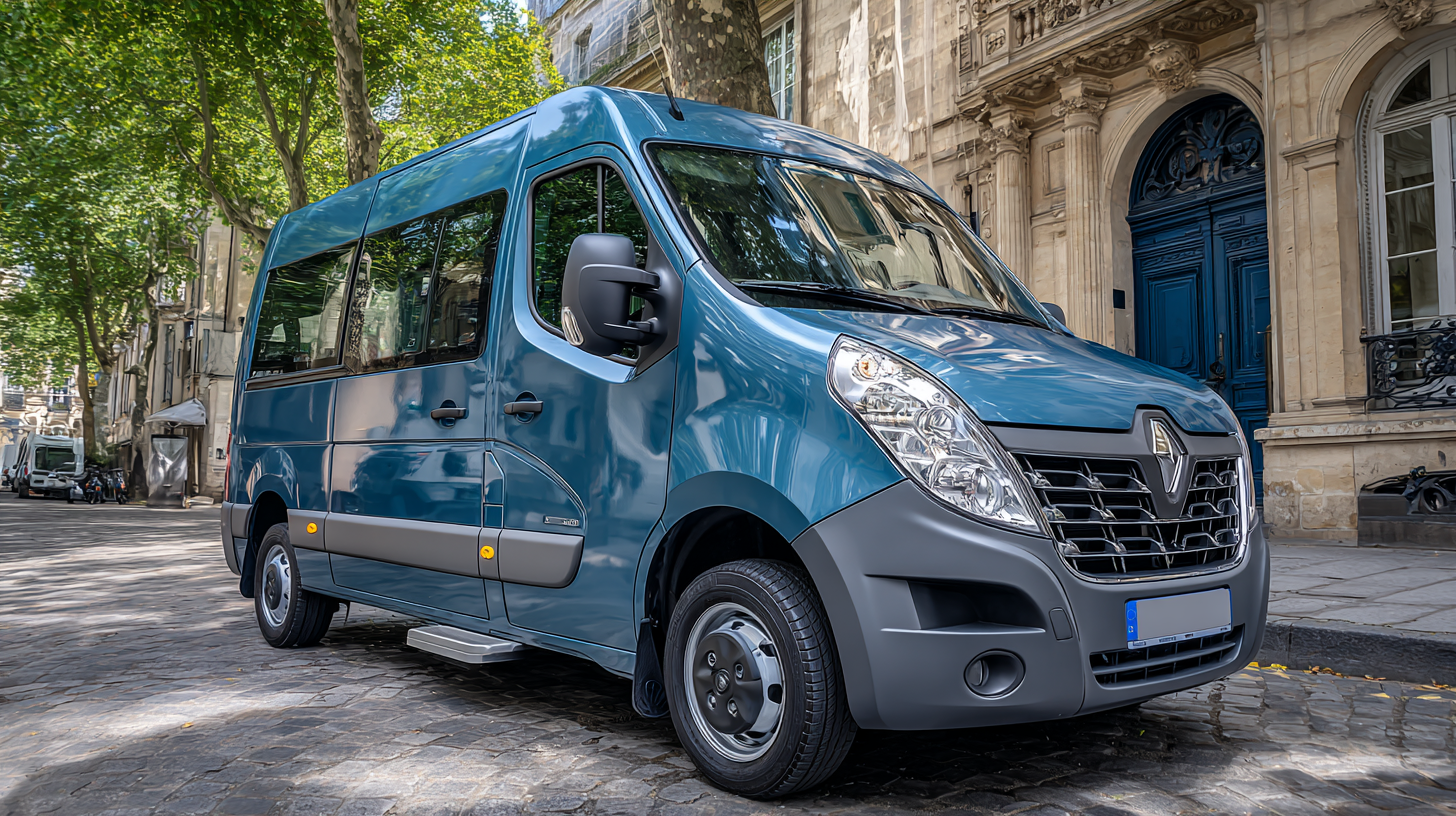15 Best Accessible Vehicles for Seamless Mobility Worldwide
The growing demand for Accessible Vehicles is a significant focus in the automotive industry, driven by the need for inclusivity and mobility solutions for individuals with disabilities. According to the World Health Organization, over one billion people, or 15% of the global population, experience some form of disability, highlighting the critical need for vehicles that cater to this demographic.
The accessible vehicle market is projected to reach $27.1 billion by 2027, reflecting a robust annual growth rate as manufacturers increasingly adopt universal design principles. This blog will explore the 15 best accessible vehicles currently available, detailing the features that make them stand out, from adaptive technologies to innovative design, ensuring seamless mobility for all users.
By adhering to industry production standards and exploring "How to" options for customization, we aim to empower individuals to make informed decisions about their transportation needs.
Innovative Features of Accessible Vehicles for Enhanced Mobility
Innovative features in accessible vehicles are reshaping the landscape of mobility for individuals with disabilities. Many manufacturers are now focusing on integrating cutting-edge technology that enhances ease of use and comfort. From automated ramps to wheelchair-secured seating systems, these vehicles are designed to ensure that users can travel independently and with dignity. With advancements in smart technology, some accessible vehicles now feature voice-activated controls and apps that streamline the driver experience, allowing for greater autonomy.
Moreover, enhanced safety features are becoming a standard in the latest accessible models. Technologies such as advanced driver-assistance systems (ADAS) help prevent accidents and ensure a secure ride. Features like adaptive cruise control, lane-keeping assistance, and even blind-spot detection are making it safer for everyone on the road. Not only do these innovations cater to the specific needs of those who rely on accessible vehicles, but they also promote a more inclusive society where mobility is a right for all. The emphasis on user-friendly design combined with state-of-the-art safety measures is a testament to the growing commitment to providing seamless mobility for everyone, worldwide.
Key Factors to Consider When Choosing an Accessible Vehicle
When evaluating accessible vehicles for seamless mobility, several key factors must be considered to ensure the best choice for the user's specific needs. First and foremost, the vehicle’s design and modifications play a crucial role. It's essential to assess features such as ramp accessibility, door width, and seating capacity. These elements can significantly affect ease of entry and exit for passengers requiring mobility aids.
Additionally, safety features are paramount. Look for vehicles equipped with advanced safety technologies that protect all passengers, particularly those with disabilities. This includes stability control, adequate airbags, and other innovations that enhance overall security on the road. Furthermore, consider the vehicle's reliability and maintenance records; a vehicle built for accessibility should not only meet mobility needs but also be dependable in daily use. Evaluating these factors will lead to a more informed decision when selecting an accessible vehicle that truly meets the user's lifestyle requirements.

Top 5 Accessible Vehicles for Urban Living and Public Transport
Urban living demands mobility solutions that prioritize accessibility without compromising style or functionality. The top five accessible vehicles stand out for their designs tailored to navigate busy city streets while accommodating diverse needs. For instance, the
2022 Ford Transit Connect
’s ample cargo space and low step-in height make it an ideal choice for both individuals and families requiring wheelchair access. According to a survey by the National Organization on Disability,
56% of adults with disabilities express that accessible transportation options significantly improve their quality of life.
When considering public transport options, electric vehicles like the
Tesla Model X
offer innovative features such as falcon-wing doors, allowing easier access for those with mobility challenges. Similarly, the
Honda Odyssey
combines flexible seating arrangements with advanced safety features, making it a popular choice for caregiving families. A report from the Bureau of Transportation Statistics indicates that over
25 million people in the U.S. rely on public transportation, highlighting the importance of accessible design in these vehicles.
Tip: When selecting an accessible vehicle, always assess your specific needs. Consider features like adjustable seating, ease of entry, and advanced technology aids that enhance the driving experience. Additionally, consult user reviews and expert evaluations to ensure the vehicle meets accessibility standards while fitting your urban lifestyle.
Real-Life Experiences: Testimonials from Accessible Vehicle Users
Navigating the world can be a challenge for individuals with mobility impairments, but accessible vehicles are transforming their experiences. In a recent compilation of testimonials, users from various backgrounds have shared how these vehicles significantly enhance their independence and mobility. One user, Sarah, describes her joy upon acquiring a wheelchair-accessible van, which has allowed her to visit family and friends without the constant worry of accessibility. With the van's automatic ramp and spacious interior, Sarah now enjoys spontaneous adventures, something she'd long thought impossible.
Another inspiring story comes from James, who relies on a modified SUV for his daily commuting needs. He recounts how the adaptive features, such as hand controls and a rotating seat, have streamlined his transition into and out of the vehicle. "It’s not just about getting from point A to B; it’s about regaining my sense of freedom," James states, highlighting the emotional impact of having the right equipment. The ability to navigate public spaces and engage with the community has enriched his life, proving that accessible vehicles can be a genuine game-changer for many users around the globe.
Future Trends in Accessible Vehicle Design and Technology
The future of accessible vehicle design and technology is rapidly evolving, with innovative trends aimed at enhancing mobility for individuals with disabilities. With advancements in autonomous driving technology, vehicles are becoming more intuitive and accommodating. Manufacturers are increasingly incorporating features such as automated ramps, adjustable seat heights, and advanced navigation systems that cater to the needs of users with varying levels of mobility. As these technologies develop, the goal is to create vehicles that not only meet regulatory standards but also provide seamless access for all passengers.
Another exciting trend in accessible vehicle design is the integration of smart technology. Many automakers are now focusing on connectivity features that allow users to control vehicle functions through mobile apps or voice commands. This not only aids people with physical disabilities in operating the vehicle independently but also enhances the overall user experience. Furthermore, the rise of electric vehicles is opening up new possibilities for sustainable and accessible transportation options, with designs prioritizing ease of access without compromising on environmental benefits. As we move forward, the intersection of technology and empathy in vehicle design will redefine mobility for everyone.

